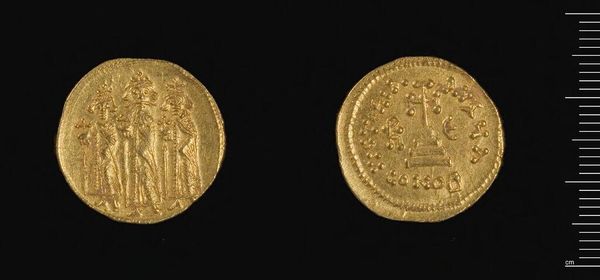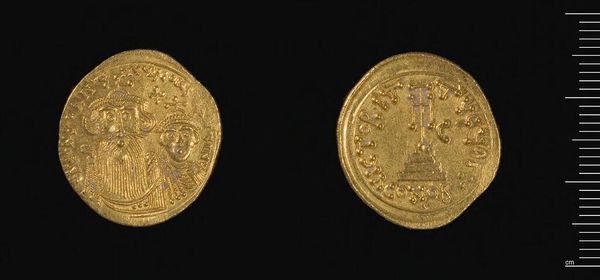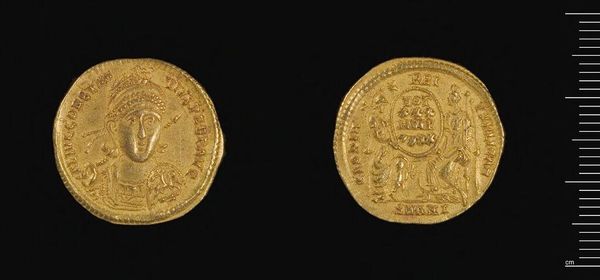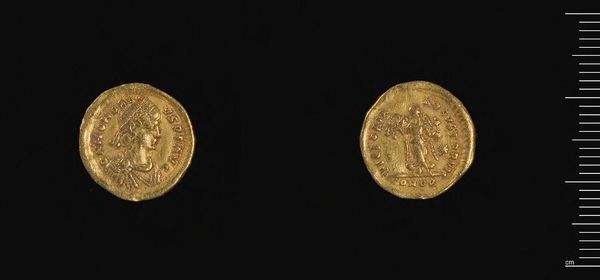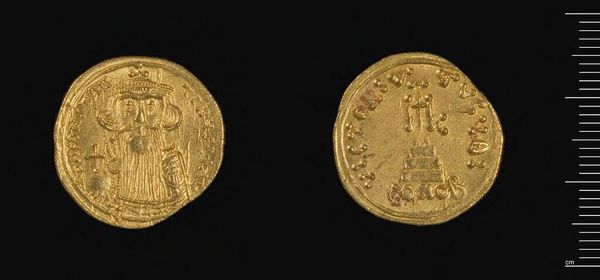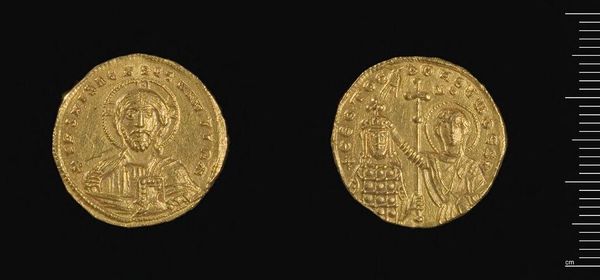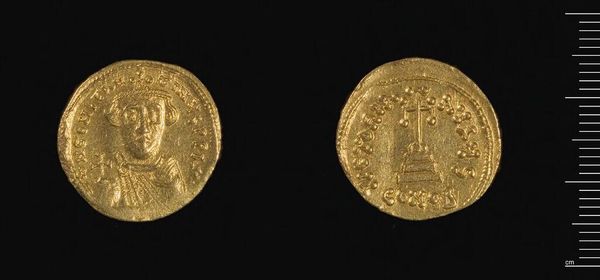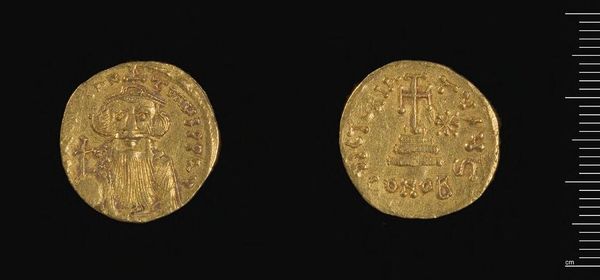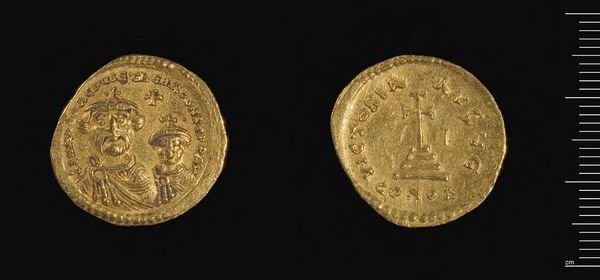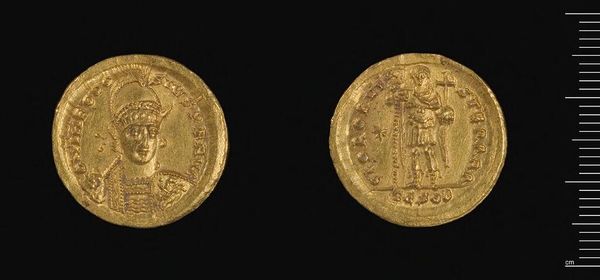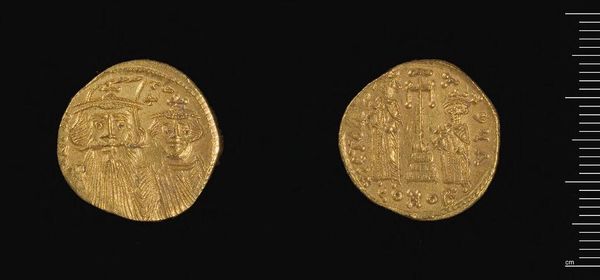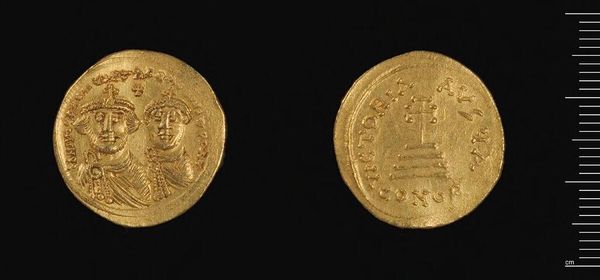
Dimensions: 4.43 g
Copyright: CC0 1.0
Curator: Here we have a gold coin, "Coin of Herakleios", made by Abd-al-Malik of the Umayyad Dynasty. It is currently located in the Harvard Art Museums. Editor: It's striking how worn it is, yet the figures still seem to command attention. You can almost feel the weight of the gold, and the history it carries. Curator: Indeed, the coin represents a fascinating transitional period. Abd-al-Malik, despite being a Caliph, initially adopted Byzantine imagery, including figures and symbols associated with Heraclius. Editor: So, it’s an appropriation of power through material means? The act of minting in gold, visually echoing existing currency, becomes a statement. Curator: Precisely. It demonstrates the complex interplay of cultural and political forces at play during the early Islamic period, showcasing how rulers used visual language to negotiate their authority. Editor: Seeing it as a crafted object, the choices made in its production – the gold, the borrowed imagery – illuminate the power dynamics of the time far more than any textbook could. Curator: A potent reminder that art, even in miniature like this coin, is never neutral; it's a carefully constructed message embedded in a specific historical context. Editor: Absolutely. It is a testament to how materiality can tell a story of cultural exchange and political ambition.
Comments
No comments
Be the first to comment and join the conversation on the ultimate creative platform.
